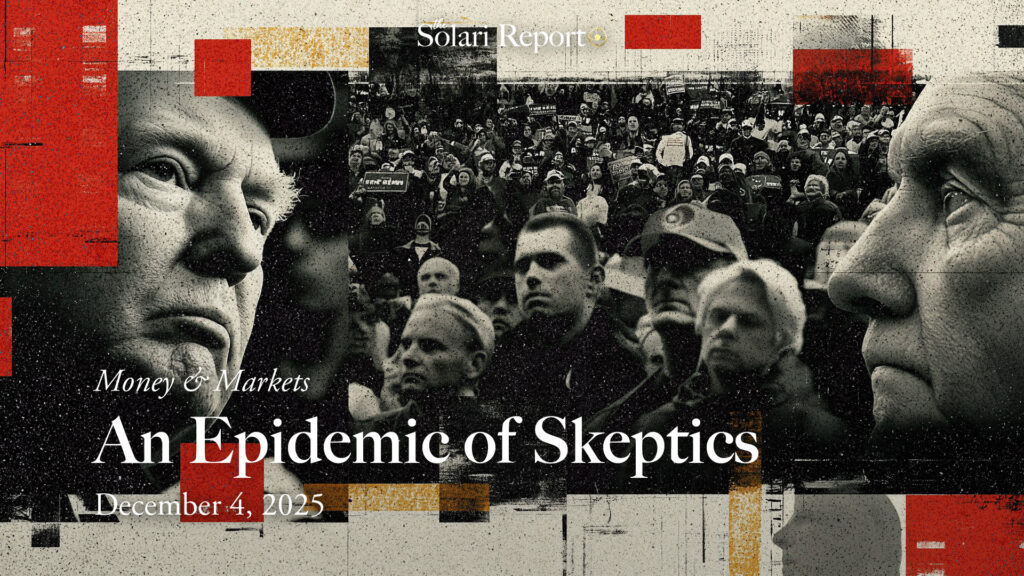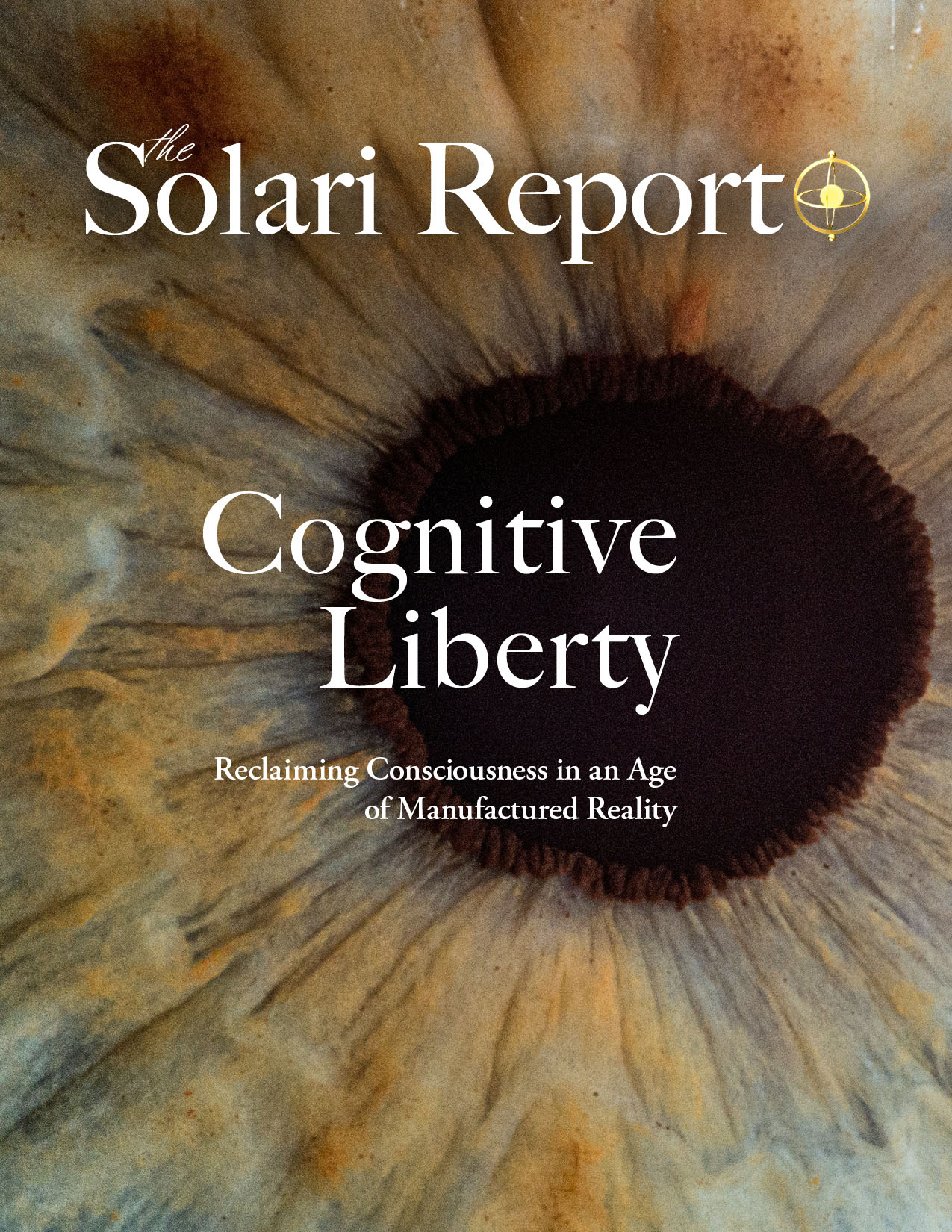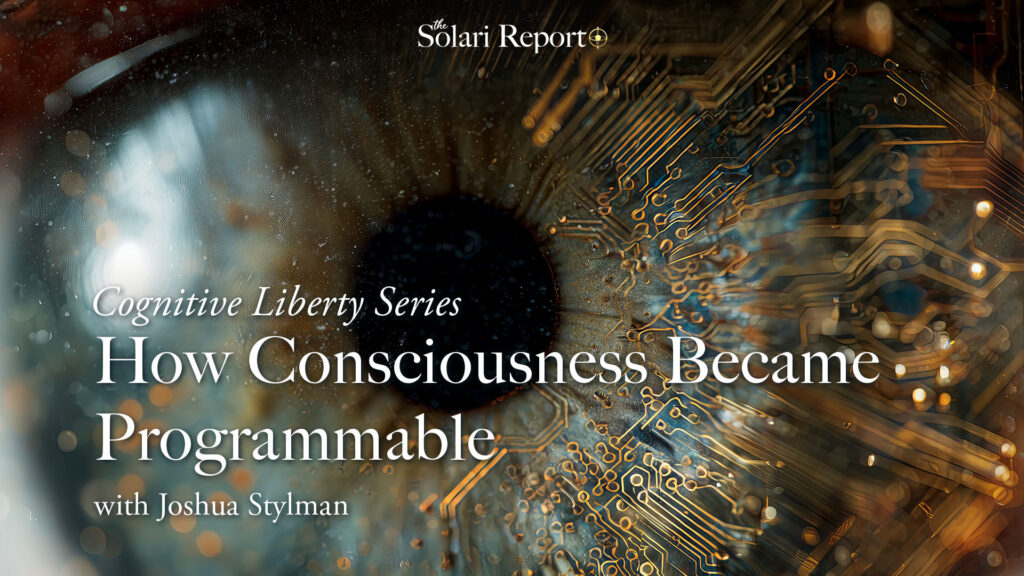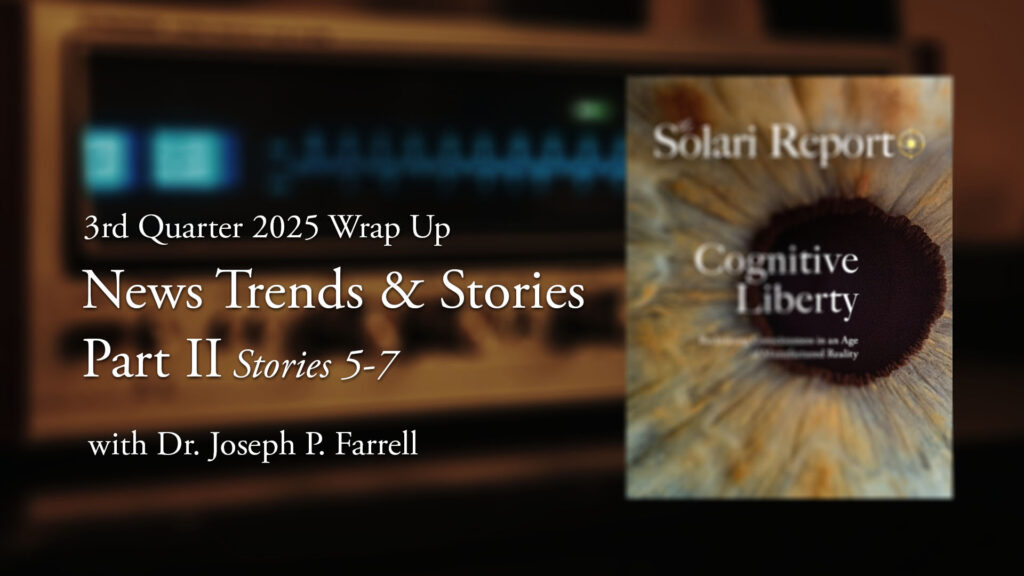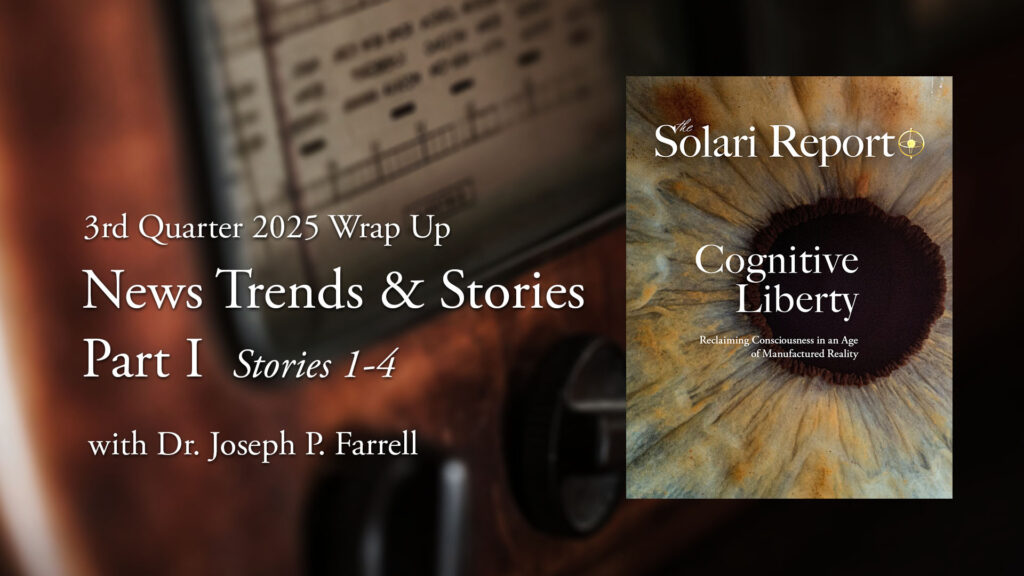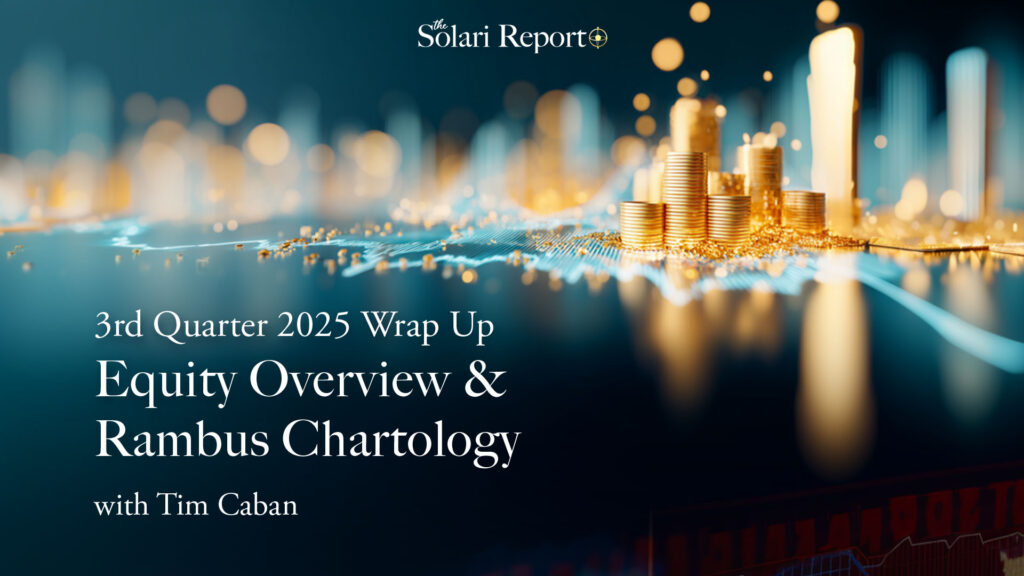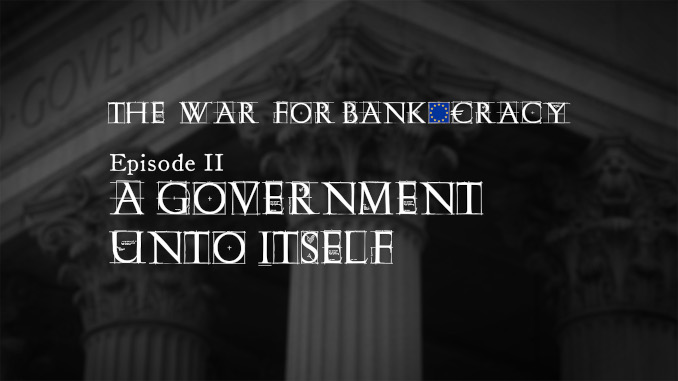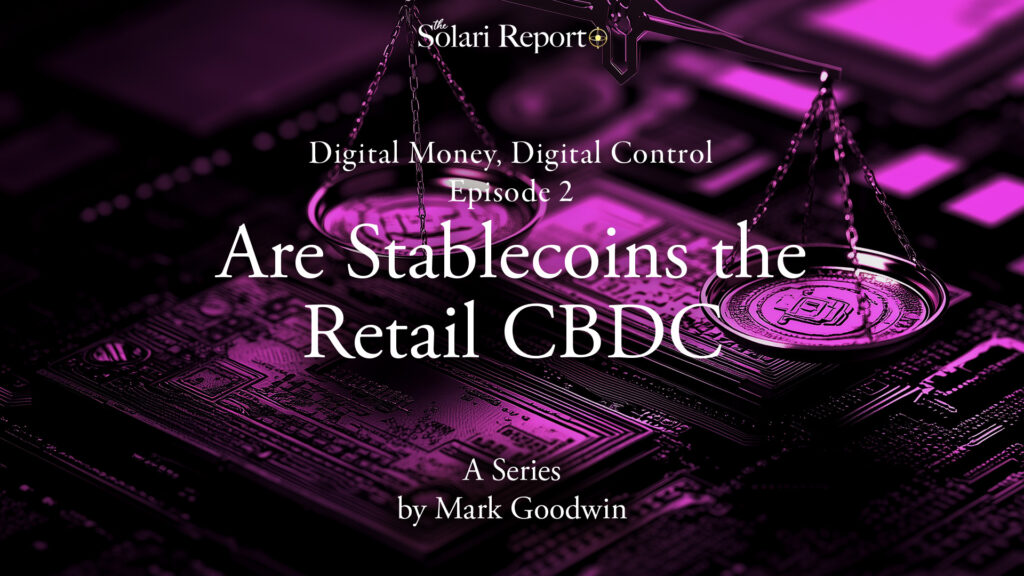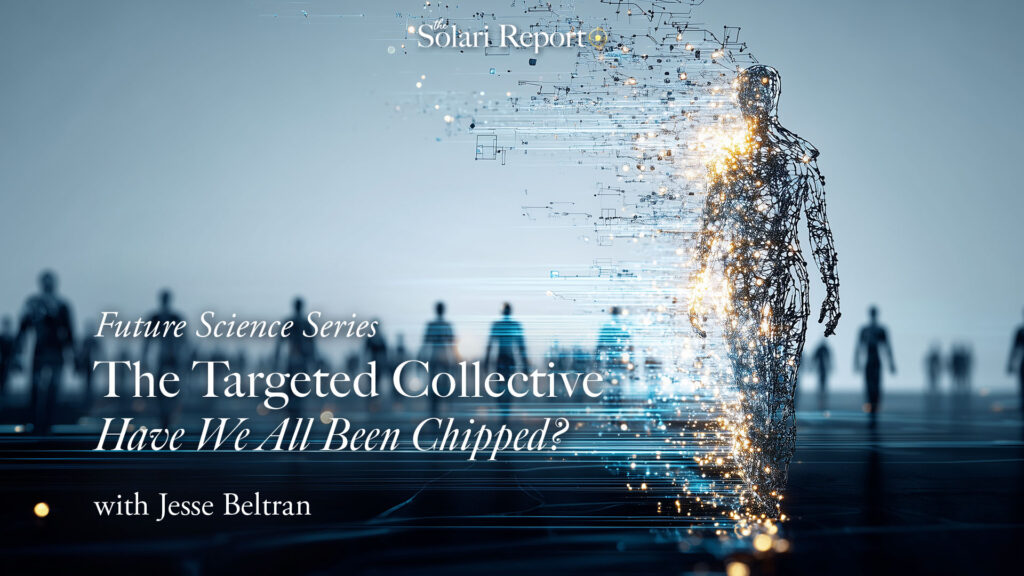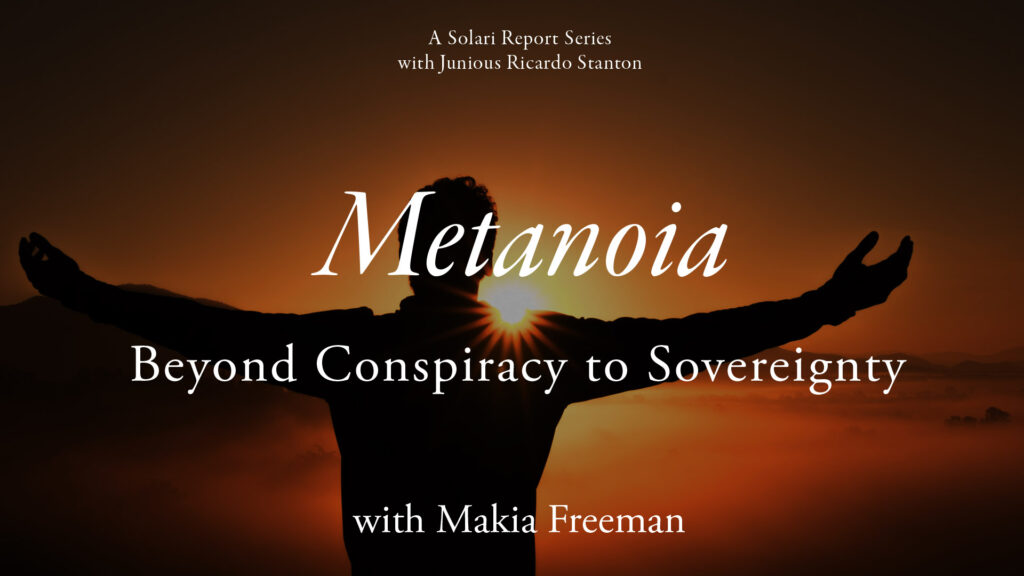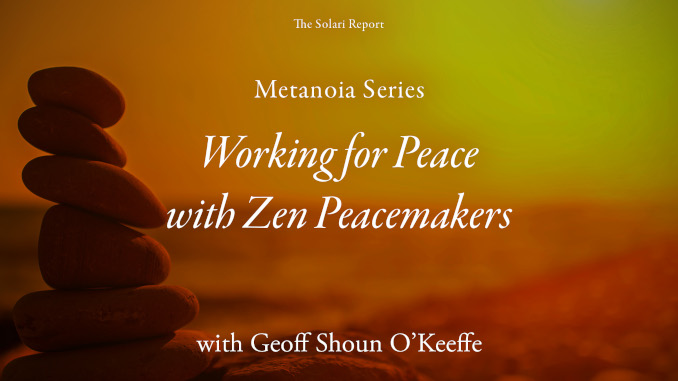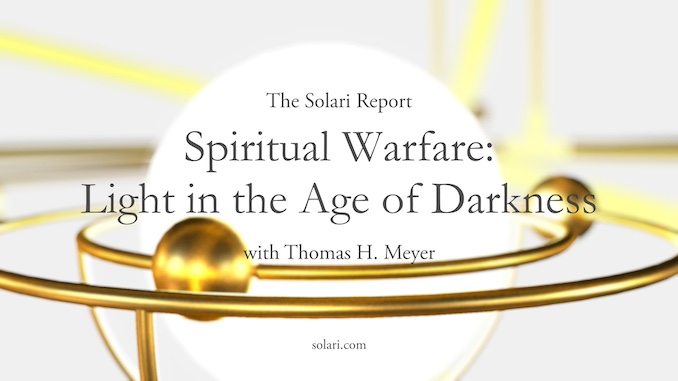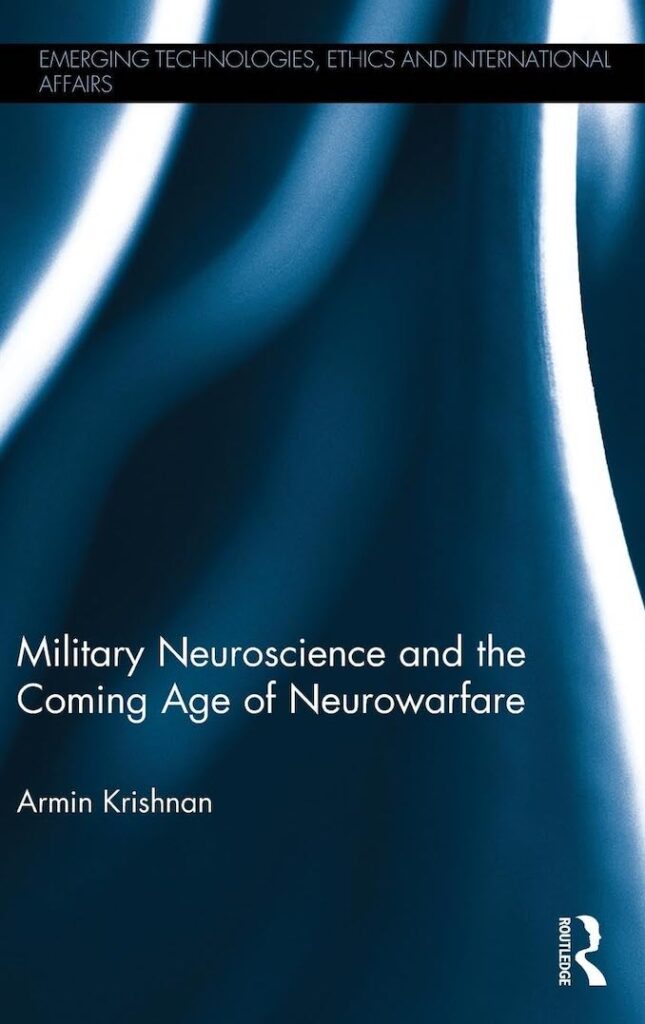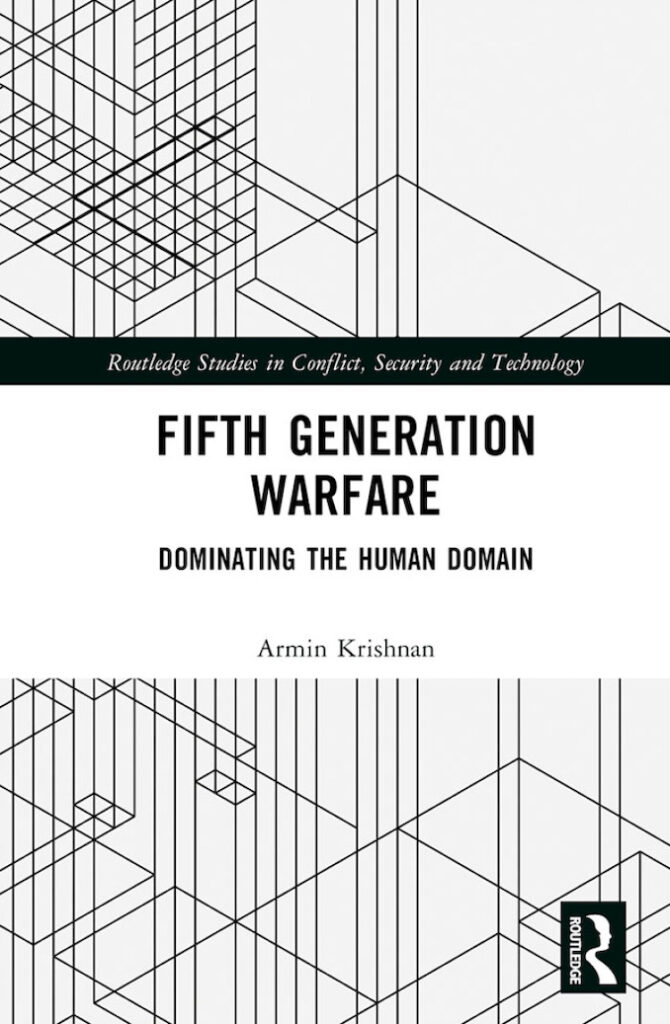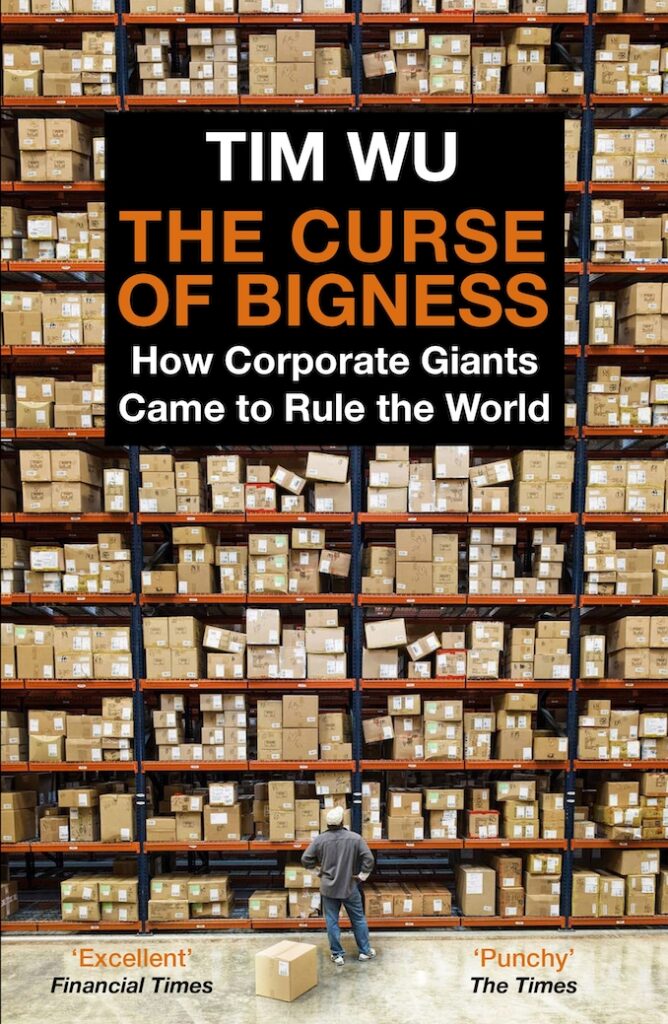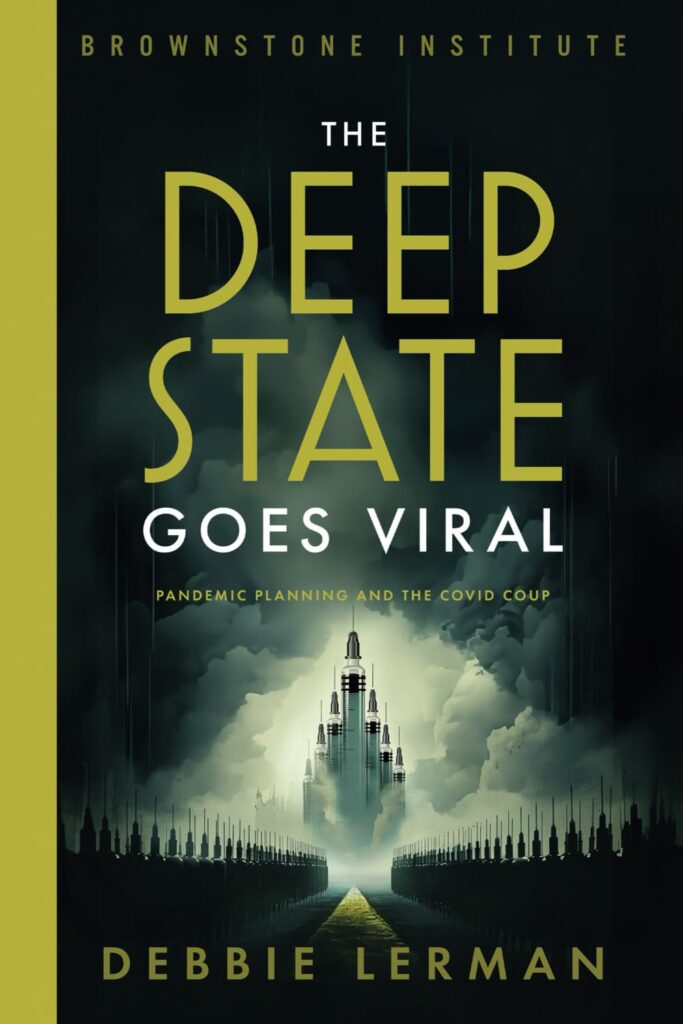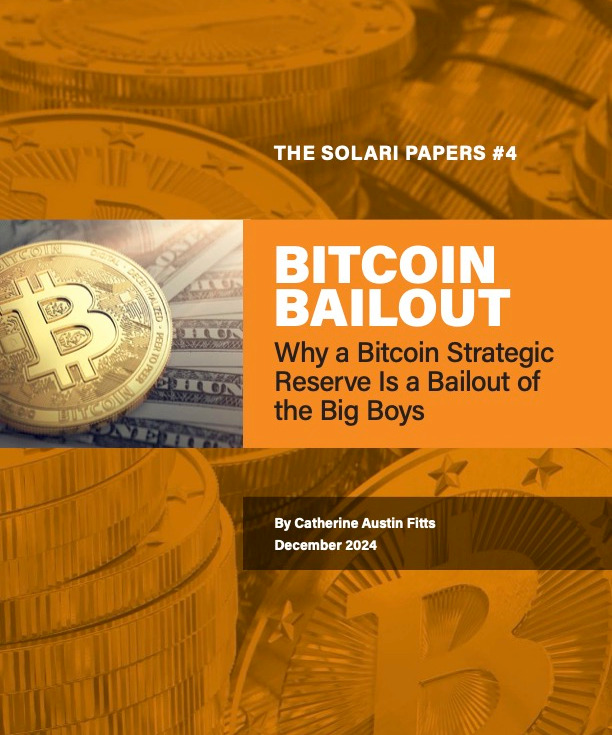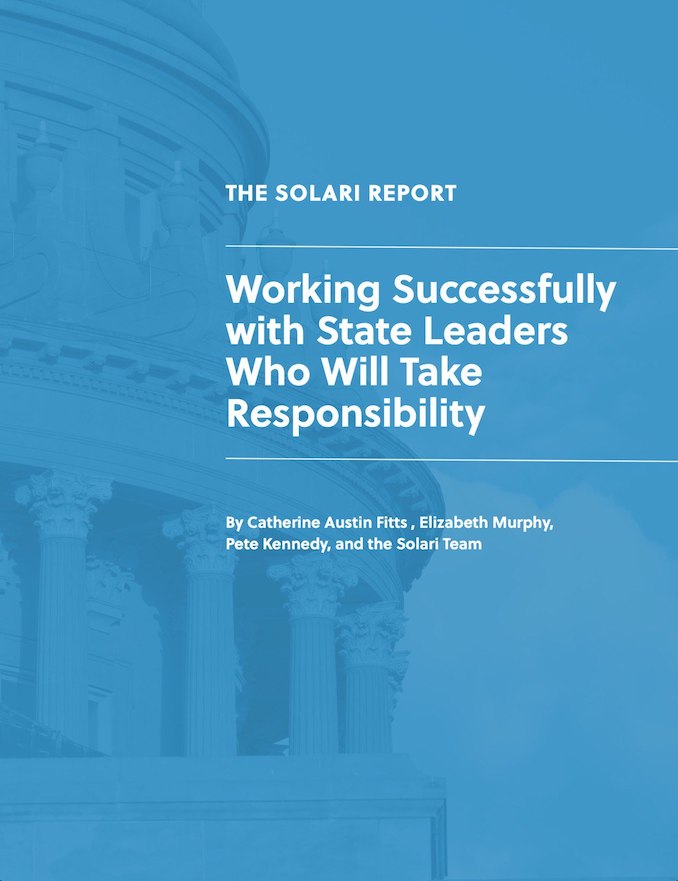Become a member: Subscribe
Book Review
Fifth Generation Warfare
Dominating the Human Domain
By Dr. Armin Krishnan
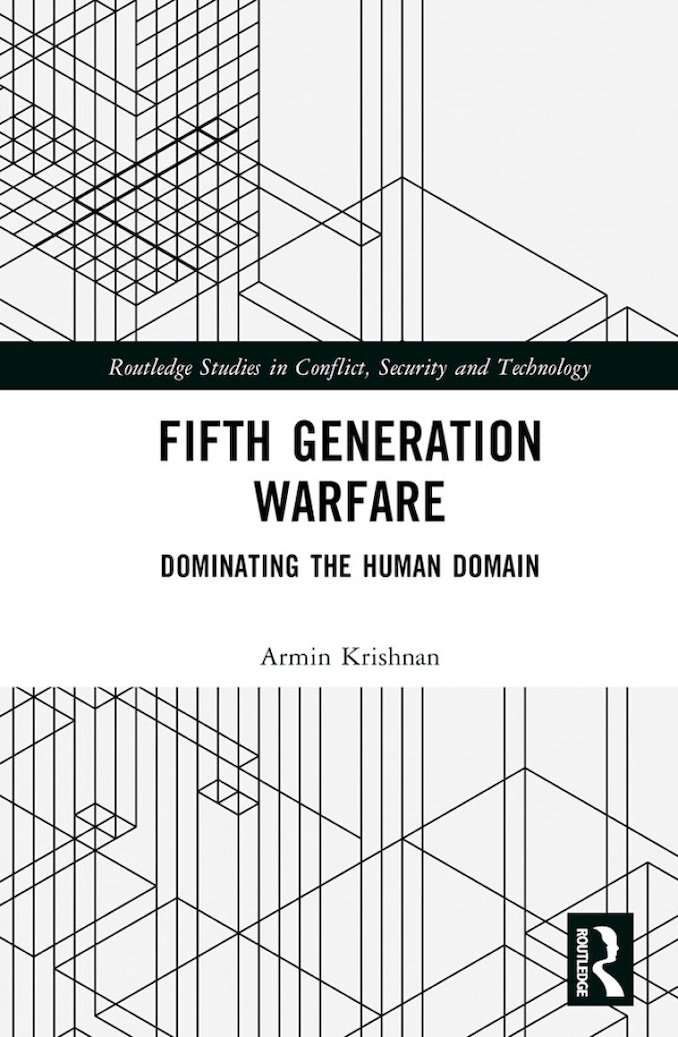
“The art of warfare is deception.”
~ Sun Tzu
Fifth Generation Warfare
Dominating the Human Domain
By By Dr. Armin Krishnan
Book Review, September 23, 2025
By Elze van Hamelen
Are we prepared for “Fifth Generation Warfare” (5GW)? Are we prepared for a war of which most people are unaware, in which the identity of the belligerents is often unclear, and which is mostly fought with non-kinetic weaponry (neuroweapons, cognitive attacks, weaponized propaganda, psychological operations, and financial, economic, and even ecological warfare)?
Most people hearing the word “war” think of bombs and conflicts between nation-states that are fought between soldiers. Ideally, in such wars, civilians are kept out of harm’s way. However, what Associate Professor Armin Krishan painstakingly documents in his book Fifth Generation Warfare: Dominating the Human Domain is that the nature of war and its key battlefields have undergone a fundamental transformation.
5GW stands everything that we usually think of as “war” on its head. Current wars are less and less about direct control over land and more about societal, political, economic, and financial dominance. Krishnan writes:
“5GW shifts the emphasis from the control of physical terrain to the control of the human terrain and the human mind as a target of attack. The objective in 5GW is ultimately the influence over, if not control, over the human mind and human behavior on a larger scale.”
Stated another way, 5GW adds the “human domain” to the traditional battlefield domains of land, sea, air, space, and cyberspace. The civilian, no longer kept out of harm’s way, is suddenly front and center on the battlefield—with his brain as the target. Krishnan explains, “The main battlespace of 5GW is the human mind, which is the realm of perception, cognition, culture, and social relationships.” In shifting the focus, “5GW bypasses the battlefield and targets society as a whole, rather than its military forces.” In essence, 5GW is a war on culture.
Though 5GW is mainly waged through psychological warfare, this does not mean that it is nonviolent. As Krishnan elaborates,
“5GW is still violent, if not in terms of the means used, it is certainly in terms of the outcomes that 5GW opponents seek to achieve. This can be the political destabilization, even to the point of civil war, the complete political subjugation of a population, even to the point where any open resistance becomes impossible, or the covert targeted elimination of a particular portion of a population (genocide or democide).”
In addition to neuroweapons, other weapons deployed under the 5GW umbrella may include environmental modification and electromagnetic pulse (EMP) events. In the “official reality,” anyone who brings up the topic of weather warfare is instantly dismissed as a “tinfoil hat conspiracy theorist”; however, by discussing the military literature, Krishnan does us the service of showing that these weapons are, in fact, part of the military arsenal and are taken very seriously by military strategists. Established techniques of environmental manipulation include flooding, fires, and creation of rain or drought. Additional techniques—clearly studied for at least half a century but not disclosed in the open literature—include geophysical weapons capable of triggering major catastrophes such as earthquakes, tsunamis, volcanic eruptions, global cooling, and damage to the ozone layer. During the Cold War, the great powers competed in a nuclear arms race; the current contest is about controlling the ionosphere.
Says Krishnan, “5GW is enabled by key technologies for attacking and steering societies, which includes information technology and also increasingly emerging technologies such as biotechnology, neurotechnology, artificial intelligence (AI), and nanotechnology.” He also emphasizes the transhumanist ideology that is informing the development of these technologies, discussing the implications and profound risks of applying these on a societal scale. The maturity of the current technologies makes the mad visions of José Delgado’s “psychocivilized society” and Aldous Huxley’s Brave New World possible realities.
Krishnan elaborates on the role of the state and its citizens: “5GW is group on group warfare and this can mean that states or certain parts of a state’s bureaucratic apparatus [are] coopted to act on behalf of one group against another group.” This process undermines the nation-state: “States therefore tend to be the victims of 5GW rather than the genuine perpetrators of 5GW.” This makes it difficult for the average citizen to make sense of what is going on, Krishnan explains: “For most people the idea that attacks could originate from their own government or corrupted elements thereof is completely alien to them, which makes them easy victims in political systems that are sliding into totalitarianism, and it also makes them potential collaborators in their own subjugation or demise.” A key tenet of 5GW is that “its victims usually do not believe they are under attack or do not understand where an attack may be coming from, which is the reason why they will be conquered.”
If 5GW is so protean, how can one prove its existence? As Krishnan explains,
“It makes sense to think about 5GW in terms of effects and outcomes, as these are usually observable while sponsors, intentions, and particular means may not be observable. The outcomes can provide clues with respect to intent and intent can potentially reveal the real actors. If bad things keep happening for no apparent reason, it is likely intentional. If no action is taken to deal with a threat, complicity by those tasked to prevent threats is likely.”
5GW shares a number of similarities with David A. Hughes’ “Omniwar” concept. Yet where Hughes frames the conflict as a class war, Krishnan emphasizes that the identity of the perpetrators remains quite opaque. In his view, there are many possible belligerents: “super empowered individuals,” deep states, coopted and infiltrated nation-states, and non-state actors. 5GW may also rely on “coalitions of different nations, international organizations, multinational corporations, NGOs, and other nonstate actors, such as terror organizations, criminal syndicates, and hacker groups.” Again, this turns the classic picture of a conflict between nation-states or the “good guys vs. bad guys” of traditional warfare upside down.
In short, 5GW is incredibly messy and diffuse. Still, the concept gives us a much better framework to understand the realities and challenges that we are dealing with than the “official reality” as presented by mass media. The discussion of what is or is not “war” may seem like hairsplitting to some, but we learn to understand things by analyzing and naming them. If you want to have a chance at winning a war, you should know that you are under attack, by whom, and with what weapons.
NATO’s adoption of a cognitive warfare doctrine makes it very clear that the military takes the 5GW battlefront seriously. This is evidence that it is policy to run society through psychological operations. On the civilian side, we see Western governments’ widespread adoption of so-called “nudge units,” reflecting methods with close similarities to the military’s “behavioral dynamics” methodology.
Although 5GW is complex, the solutions may be simpler. The main way to resist is to cultivate your freedom of mind and exercise discernment when you expose yourself to information technologies. You have the power to say “no” to anything that is degrading your consciousness. The aim of 5GW is to break down society; resistance means building, maintaining, and growing the culture.
See the many related links listed for my interview with Dr. Krishnan, “Neurowarfare: It’s Not Science Fiction Anymore.”
Related at Solari
Neurowarfare: It’s Not Science Fiction Anymore with Dr. Armin Krishan
Log in or subscribe to the Solari Report to enjoy full access to exclusive articles and features.
Already a subscriber?







